Crafting a programmer resume doesn't have to be tougher than writing clean, bug-free code. Just as there are defined best practices in coding, there are clear rules for creating an irresistible programmer resume.
In an industry that's growing by the nanosecond, standing out from the competition becomes a critical variable. Don't panic! We've compiled seven proven tips that will upgrade your programmer resume from 'dismissible draft code' to 'production-ready package' no employer could resist.
As a bonus, we include a programmer resume example that got a real person hired at Phynd and examine why it was successful.
Still looking for a job? These 100+ resources will tell you everything you need to get hired fast.
1. Choose the right format for your programmer resume
Coding an effective programmer resume starts with a crucial decision — choosing the right resume format to best showcase your skills and experience.
Think of it as selecting the right data structure for an algorithm, the choice significantly impacts your resume's efficiency and readability.
For programmers, two resume formats stand above the rest:
- Functional resume format: This format puts your skills front and center — just what you need in a field where your skills are the alpha and omega. You get lots of space to talk about your hard and soft skills (emphasis on the hard skills). It's a top choice, whether you're just starting out, switching careers, or if you've already mastered a handful of coding languages.
- Combination resume format: As the name suggests, this format is a hybrid approach. It allows equal emphasis on both your skills and work experience. It makes it suitable for seasoned professionals or those who have made significant contributions in certain positions or projects.
2. Include a professional summary in your programmer resume
Writing an effective professional summary may require some time to brainstorm. After all, its the first piece of writing on your resume that a hiring manager reads.
Tips for writing a professional resume summary:
- Use keywords from the job posting. This is how you catch a hiring manager’s attention and instantly make yourself seem like the perfect candidate.
- Include an accomplishment and quantify it. Think of your greatest accomplishments related to the job, and quantify them whenever you can. Avoid listing dull duties and responsibilities that talk a lot but say nothing.
- Use impactful language. Consider using action-oriented verbs, like accelerated, assembled, or engineered. Also, powerful adjectives can make a big change too. Think logical, systematic, or user-friendly.
Bad example of a programmer professional summary
I have worked as a programmer and designed some solutions.
Why does it fall flat? This summary lacks specifics, doesn't include any achievements or quantify any contributions, and fails to incorporate strong action verbs or adjectives.
Good example of a programmer professional summary
Enthusiastic Programmer and Solution Architect with 5+ years demonstrated experience in designing, architecting and supporting enterprise-level internet-scale solutions hosted on cloud and on-premise technologies. Led the optimization effort and realized a total savings of USD 5M per year. Implemented service auto heal system to auto-recover services from failures. Eliminated 2000+ service failure alerts and reached 200+ ticket reductions.
Why does it work? This summary effectively incorporates job posting keywords, quantifies achievements, and uses dynamic language, offering a robust snapshot of the candidate's abilities and impact.
3. Select the best skills to put on your programmer resume
As a skilled programmer, you're surely familiar with more programming languages than one would need. It may be tempting for you to fill your resume with an array of hard skills, whether they're needed or not. Would that be effective, though?
Each recruiter is looking for specific skills. So, tailor your skills section, and mention first those programming languages that are relevant to the position you're applying for. As a bonus, you can surely score by adding your proficiency in them.
While the main focus should be your hard skills, remember to add your soft skills, too. These speak loud about your personality traits that enhance your suitability for the given job.
Best hard skills to put on your programmer resume
- Python (Certified Professional in Python Programming 2)
- SQL (expert proficiency)
- ReactJS (advanced proficiency)
- Angular (advanced proficiency)
- PHP (professional)
- HTML
- CSS
- C#
- Java
- Model-View-Controller
- GIT
- SCRUM
- Azure DevOps
- JIRA
Proficiency in programming languages such as Python, SQL, ReactJS, Angular, PHP, and others gives candidates an edge in job applications. Meanwhile, knowledge of Model-View-Controller architecture, version control with GIT, and workflow management with Azure DevOps and JIRA shows potential employers you've got a grasp on best practices.
Best programmer soft skills for your resume
- Attention to detail
- Communication
- Organization
- Teamwork
- Patience
- Accountability
- Positivity
- Problem-solving
- Curiosity
- Motivation
- Patience
- Strong memory
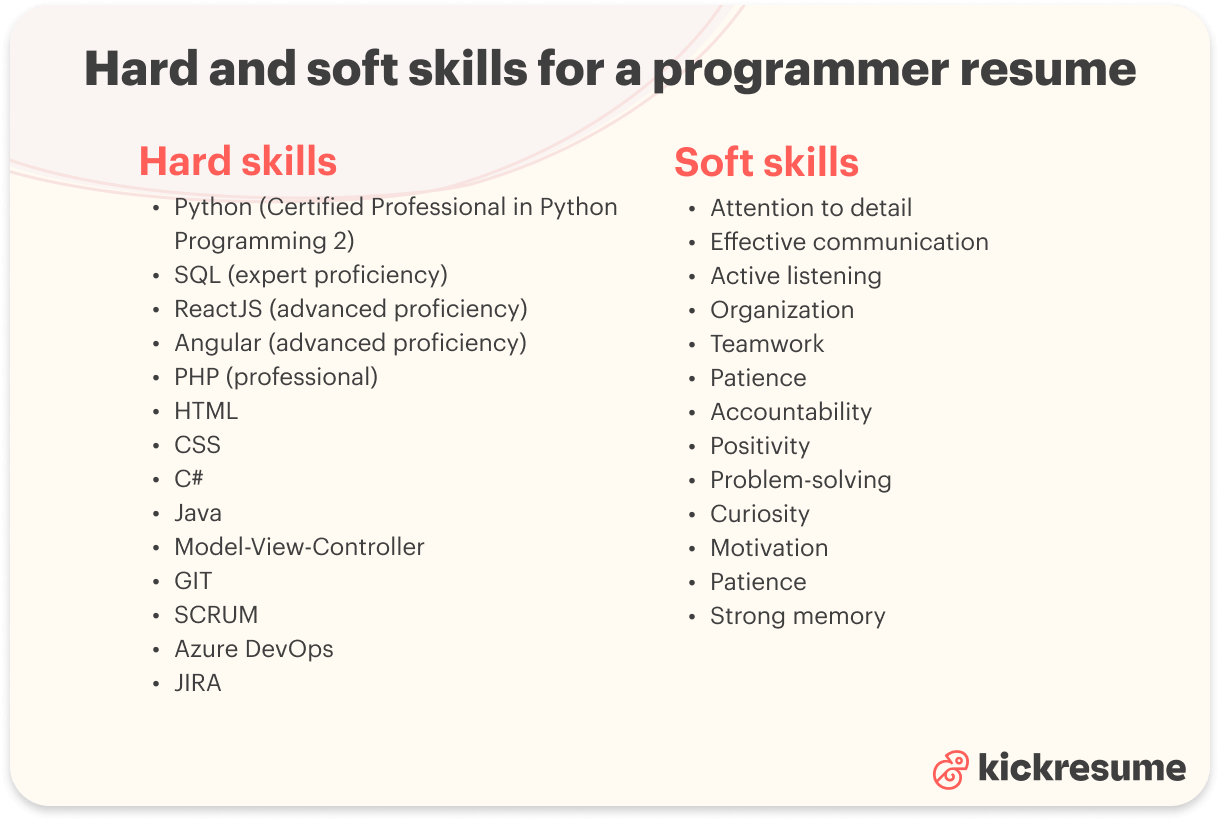
4. List relevant work experience in your programmer CV
When listing work experience, relevance is key. Try to focus on the roles that closely match the job you're applying for. Use keywords from the job description so the hiring manager can easily see your fit, and don't shy away from showcasing your accomplishments — be sure to quantify them where possible.
However, a unique challenge arises when you've worked on confidential projects or signed a non-disclosure agreement (NDA). In such cases, it's advisable to consult with your manager to understand what you can disclose in your resume.
If your managers aren't aware that you're job hunting approach this with caution. Be vague about the confidential projects on your resume, just enough to entice the hiring manager without oversharing. You could write something like, 'Developed multiple features for a high-profile project under NDA.'
Include a note explaining your inability to share specifics due to confidentiality, but also hint at your willingness to provide more details in person if appropriate. This way, you uphold your commitment to prior employers while still demonstrating your wealth of experience. Remember, discretion is vital, but so is showcasing your abilities!
Bad example of a programmer work experience section
BMC Software, Austin, Texas
Senior Software Programmer
2015-2020
- Built various applications. Worked on a secret project.
Why is it wrong? This example is vague and doesn't showcase any impactful involvement or achievements.
Good example of a programmer work experience section
BMC Software, Austin, Texas
Senior Software Programmer
2015–2020
- Developed several internal web applications, with significant contributions to some subject to an NDA.
- Designed and maintained large-scale solutions using both cloud and on-premise tech. Further details on certain initiatives restricted due to an NDA.
- Led the optimization effort and realized a total savings of USD 5M per year.
- Implemented service auto heal system to auto-recover services from failures.
- Eliminated 2000+ service failure alerts and reached 200+ ticket reduction.
Why is it effective? Besides demonstrating substantial achievements that are quantified, it skillfully communicates involvement in confidential projects without revealing specific details, simultaneously demonstrating professionalism and experience.
5. Make your resume education section stand out
Even if there were hardly any specific education requirements in the job posting in question, that certainly does not imply “no education”.
Your programming background is important, as well as the way you present it.
Whether you have a degree in computer science or not, you can make your education section stand out by adding relevant coursework and achievements.
Listing education in your programmer resume
Technical University of Pennsylvania, Philadelphia, PA, United States
MA in Artificial Intelligence
2010–2015
- Area of interest: Computer Vision and NLP
- Excelled in Software Engineering for Data-Intensive Sciences
- Relevant Coursework: Computer Vision and NLP, Advanced Robotics 4.0, Applied Autonomous Driving, Artificial Intelligence, Advanced Mathematics, Software Engineering for Data-Intensive Sciences
6. List relevant extra sections in your programmer resume
When it comes to creating a programmer resume, it's important to include extra sections that can showcase your skills, achievements, and personal interests. These sections can add valuable context and help set you apart from other candidates.
When listing extra sections, start with those that are most relevant to the position you're applying for. For example, if you're applying for a front-end web developer position, you may want to include sections on your experience with HTML, CSS, and JavaScript frameworks.
Other sections that may be relevant to a programmer resume include:
- Certifications and training. Include any relevant certifications or training courses you have completed, such as certifications in programming languages, Agile methodologies, or cloud computing.
- Projects. Highlight any significant projects you have completed, including those from school or personal work, that demonstrate your programming skills and creativity.
- Volunteer work. If you have volunteered your programming skills to a non-profit organization or open-source project, be sure to include it on your resume.
- Hobbies. Personal interests, such as building apps, participating in hackathons, or contributing to open-source projects, can also help showcase your passion for programming.
- Awards. If you have received any awards or recognition for your programming skills or contributions, it's definitely worth adding a section to your resume to highlight them.
- References. This is a potential game-changer. If you can, ask someone to be a reference to vouch for your skills and work ethic. Their endorsement can significantly enhance your programmer resume's credibility.
Listing awards in your programmer resume
Awards
- Excellence Award in Operations Excellence, Casco Project, February 2019
- Microsoft Gold Star Award, April 2029
- IT Excellence Award, Bredson’s AI, March 2020
7. Include your GitHub on your programmer resume
GitHub is the programmers' favorite playground, a shared space to store their code, collaborate on software projects and manage code files. Adding GitHub to your resume is like opening a treasure chest for hiring managers, offering a glimpse of your coding abilities and experience.
And how to include GitHub on your resume? In the contact info section at the very top of your resume, include a line for your GitHub account, complete with a clickable link.
This provides hiring managers a clear view of your coding prowess, from the comfort of your workspace.
Pro tip: Don't share your GitHub link if your projects happen to be company-restricted or confidential.
Here are some tips to prepare your GitHub for the public eye:
- Show your best work. Even a single project can work wonders. A captivating project becomes a testament to your skills and capabilities, meaning recruiters probably won't dig too deep beyond it.
- Organize your directory. Consistently adhering to Simple Folder Structure Conventions for GitHub projects shows your neat and organized coding style, encouraging recruiters to explore more.
- Include READMEs. A comprehensive README file can serve as a tour guide for your application, explaining what it does and how to use, build, and test it. Consider adding visuals like screenshots or gifs to demonstrate the application's functionality.
- Live demo or installer link. Whether it’s a web or a desktop application, have it live or provide an installer link. This inclusion makes your project look professional and readily accessible — all without running it. If you're balking at the idea of hosting, remember that GitHub provides a platform for simple static websites and excellent release management. So, you can host your installers right there.
- Clean, commented code. Ensure your code is clean, easy to read, and adequately commented. Most viewers may not delve deep into your code, but for the curious ones, your comments will provide valuable insights into your coding thought process.
8. Avoid common mistakes in your programmer resume
Crafting a programmer resume is an art, and overlooking common mistakes can be the undoing of your masterpiece. Here's how to sidestep those missteps:
- Spelling and grammar errors: These can tarnish the impression of proficiency and attention to detail. Leverage spell-check tools, or enlist a friend to proofread your resume.
- Inadequate clarity: Are your bullet points barely scratching the surface of what you did? Add more meat—describe the environments, tools, methodologies, and impact of your work.
- Overlooking ATS (Applicant Tracking Systems): Today, most hiring processes are aided by ATS software that screens and ranks resumes. To beat this, feature relevant keywords from the job description and hold off on fancy formatting.
- Missing information: Your contact details, academic qualifications, skills, and work history are crucial. Make sure this information is easy to locate and read.
- A 'one-size-fits-all' approach: Tailoring your resume to each job application can make a world of difference.
- Long blocks of text: Break up text into bite-size, easy-to-read bullet points, especially in your experience section.
Remember, common mistakes are common for a reason — they're easy to make, but with this list, they're also easy to avoid!
9. Pairing your programmer resume with a relevant cover letter
A strategic add-on to your programmer resume is a proficiently crafted cover letter. It provides an avenue to bind your experience and skills directly to the job's requirements. Remember to include it, especially if the job posting explicitly asks for one.
While your resume is a concise summary of your skills and experience, your cover letter communicates your enthusiasm for the job and highlights how your unique experiences make you an ideal fit.
Programmer cover letter acts as an introduction and articulates why you're interested in the role. It connects your experiences and accomplishments to the specific needs of the position.
Essentially, your resume tells recruiters what you've done; your cover letter demonstrates how you're the ideal fit for the position. Always pair your programmer resume with a customized cover letter to provide a deeper insight into your suitability for the role.
10. Average salary and job outlook for programmers
According to the most recent data from the Bureau of Labor Statistics (BLS), programmers drew an average annual salary of $97,800 in May 2022.
However, it's important to note that job prospects for programmers may offer a mixed bag in the near future. Employment of computer programmers is projected to see a decline of 11 percent from 2022 to 2032.
The silver lining? Despite the projected employment downturn, there are still opportunities. Around 6,700 openings for computer programmers are anticipated each year, on average, over the next decade. So, while statistics indicate a dip in growth, the industry will continue to offer a substantial number of opportunities for adept programmers.
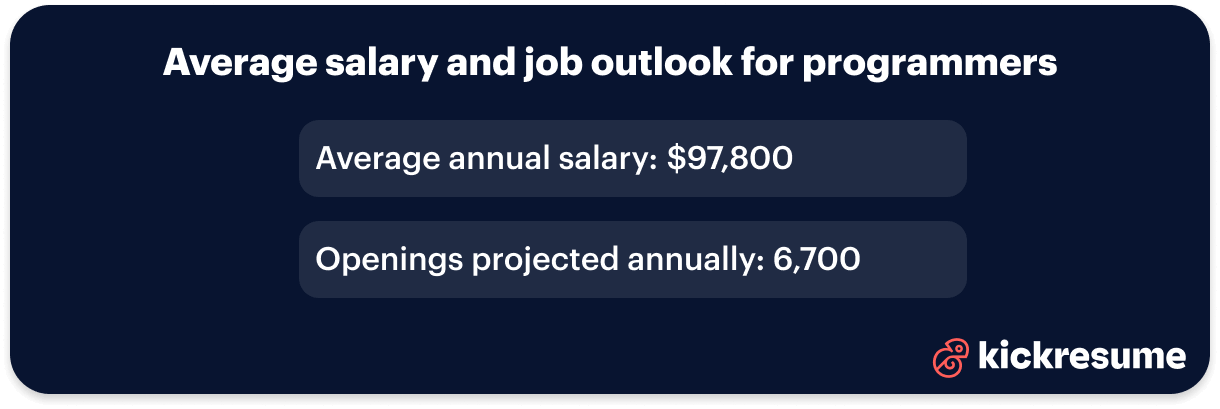
11. Best resources for job-seeking programmers
Navigating the job market as a programmer can be a challenge, but the right tool kit can simplify the process. From tech-specific job boards to professional networking sites, here's a roundup of the best resources for job-seeking programmers:
- Stack Overflow jobs: A treasure trove for programmers seeking jobs, Stack Overflow offers a dedicated jobs section catering to various niches within programming.
- GitHub jobs: GitHub's job board is an excellent place to find programming jobs from around the globe. The platform itself is also a fantastic resource for showcasing your projects, collaborations, and coding strengths.
- LinkedIn: With its vast networking opportunities, job listings, and industry updates, LinkedIn is invaluable for programmers. Make sure your profile is up to date and you're active in relevant groups.
- CodeProject: This site provides job postings alongside its thorough articles and discussions on coding. It’s a great way to learn new programming tricks while job hunting.
- AngelList: If you're keen on working in a startup environment, AngelList has an extensive list of job openings from up-and-coming companies.
Remember, apart from job listings, these resources also offer opportunities for networking, learning, and showcasing your coding talent. Make the most of them to stand out in your job hunt.
Programmer resume example
Finally, we believe that a single image can speak volumes — hence, take a look at a real programmer resume sample that helped someone secure a job at Phynd.
This is what made the cover letter successful:
- Strong professional profile. Also called a resume summary, it highlights her role in leading on-site and offshore teams, extensive software development experience, and strong technological and problem-solving skills. This sector-specific summary immediately gives potential employers a comprehensive understanding of her capabilities.
- Hard skills at the top. A technical summary of hard skills is featured at the top of the resume. Doing so makes it the first thing recruiters see and showcases a strong technical skill set from the outset. Listing each skill separately also ensures the resume can be easily picked up in automated keyword searches.
- Powerful experience section. Each work experience is well-described, detailing specific responsibilities and achievements. The use of action verbs and powerful adjectives brings dynamism to the resume.
- A standalone skills section. The full version of this resume includes a separate skills section, allowing recruiters to see at a glance the candidate's competencies in a range of programming languages, design patterns, database technologies, and operating system administration.
If you'd like to see the full two-page version of this resume, click directly on the picture.
Key takeaways: Programmer resume
To sum everything up, here's how you turn an average programmer resume into a job-winning one in 7 steps:
- Choose a functional or combination resume format to highlight your skills.
- Include a resume summary that's tailored to the job and has quantifiable achievements.
- Your skills section should be packed with hard skills and should sit at the top.
- Make sure the work experience section is tailored to the job.
- Make the education section relevant by adding relevant coursework and achievements.
- List extra sections that are most relevant to the position you're applying for.
- Add GitHub to your resume and prepare your GitHub presence.
- Proofread your resume and steer clear from common mistakes.
- Pair your resume with a cover letter that provides a deeper insight into your suitability for the role.
- Optimize your use of job search resources not just for job listings but also for networking, ongoing learning, and showcasing your coding prowess.
Programmer Resume FAQ
Should I include both hard and soft skills on my programmer resume?
Absolutely. While technical proficiencies are vital for a programmer, showcasing your soft skills like problem-solving, communication, and teamwork can help employers see your full potential.
For each job listed in my experience section, what kind of accomplishments should I highlight?
Focus on achievements that have measurable outcomes, such as a percentage increase in efficiency, or instances where your problem-solving led to a successful project outcome. This way, potential employers can see the tangible impact of your work.
How important is the resume's layout and design for a programmer position?
Clarity and readability of your resume are crucial. A clean, professional layout will help your resume stand out. However, unless you're applying for a role that blends programming with design, flashy or creative designs are usually unnecessary.
If I've done relevant freelance work or personal projects, should I list these on my programmer resume?
Yes, any experience that demonstrates your skills and knowledge is worth including. Just make sure to outline the project and specify what you achieved or learned from these experiences.
Is it worth including my programming certifications on the resume?
Certifications show that you are committed to ongoing learning and are up to date with current technologies and practices. They are absolutely worth mentioning in your programmer resume.







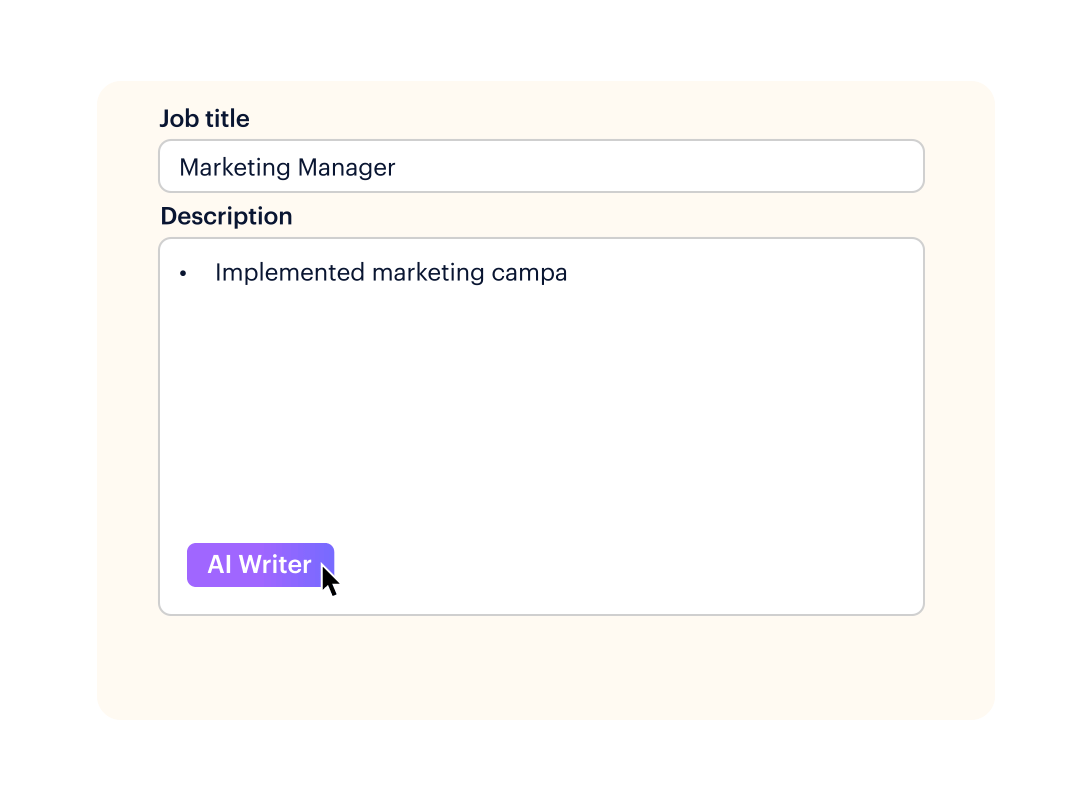

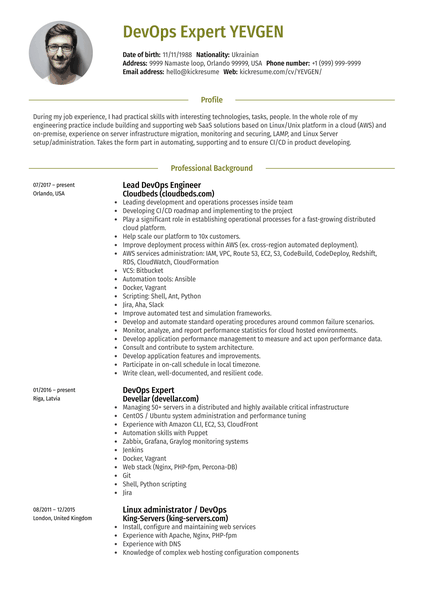

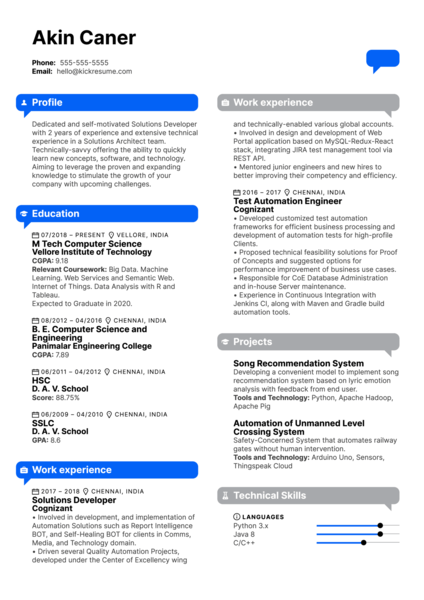


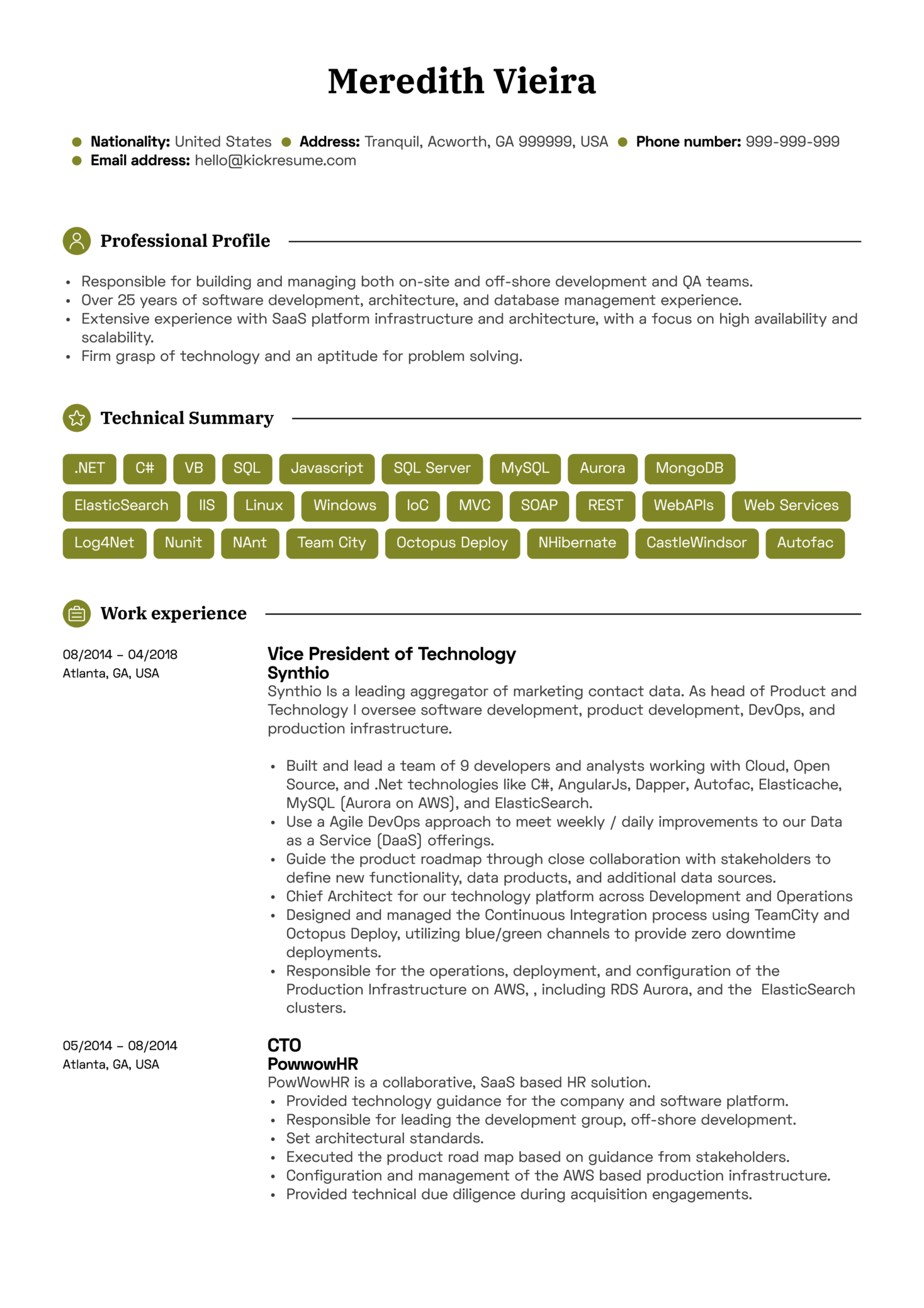
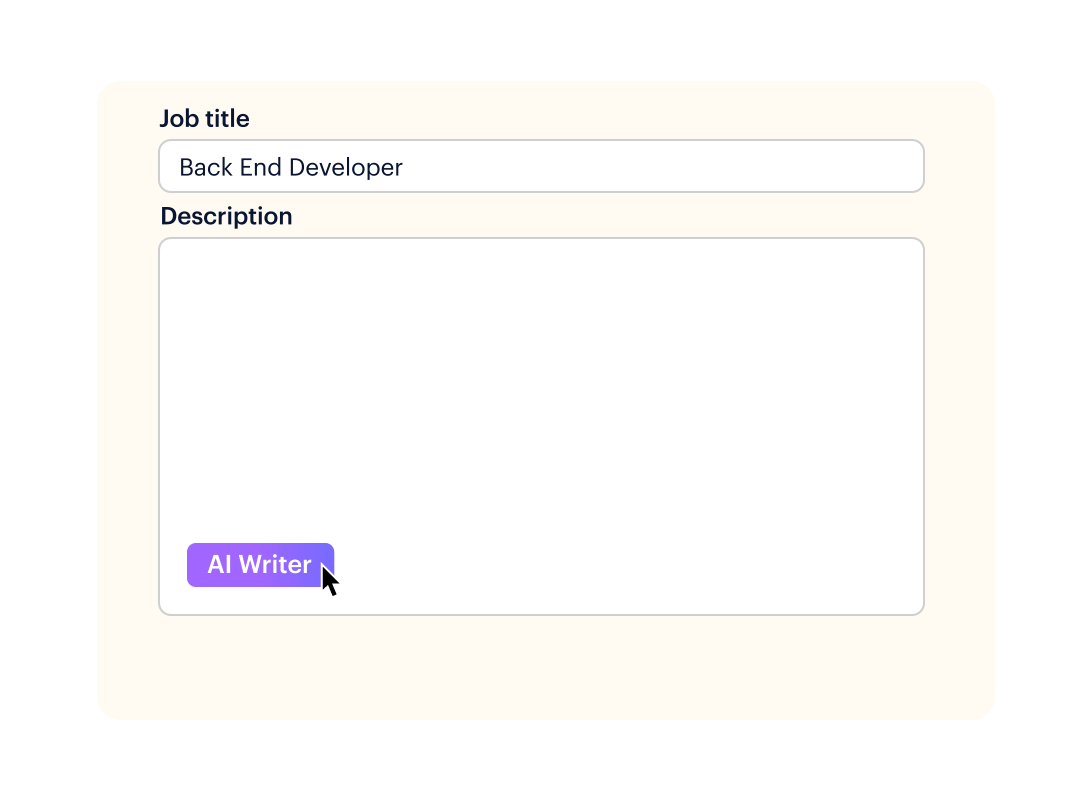
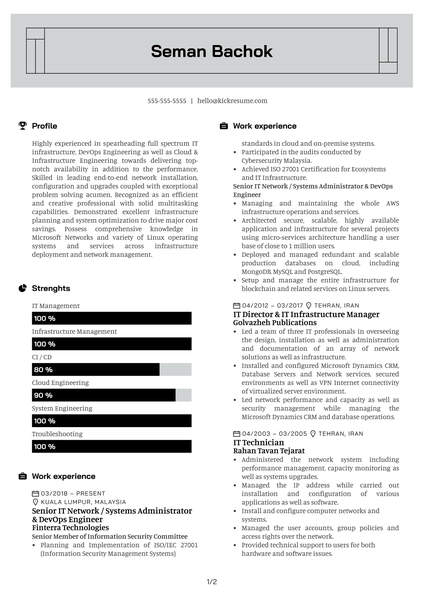

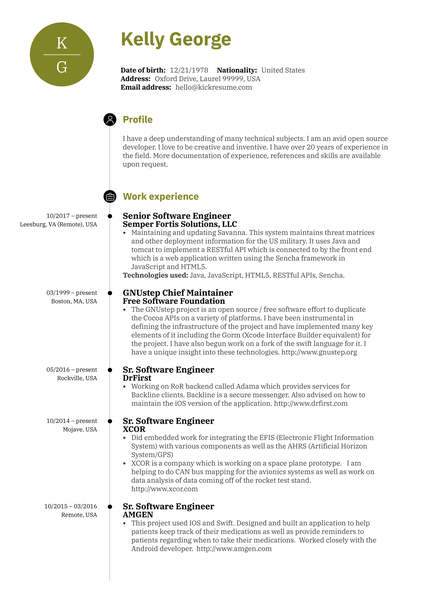
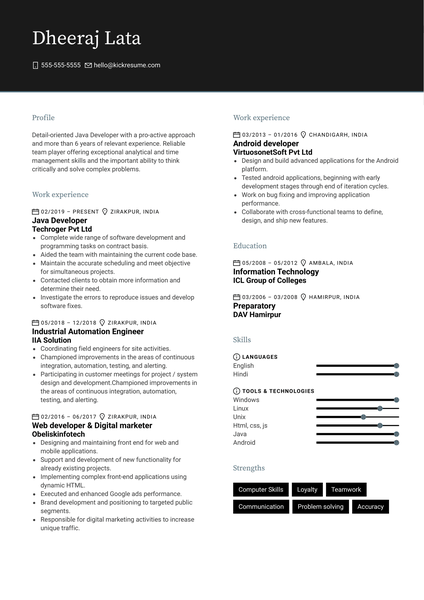
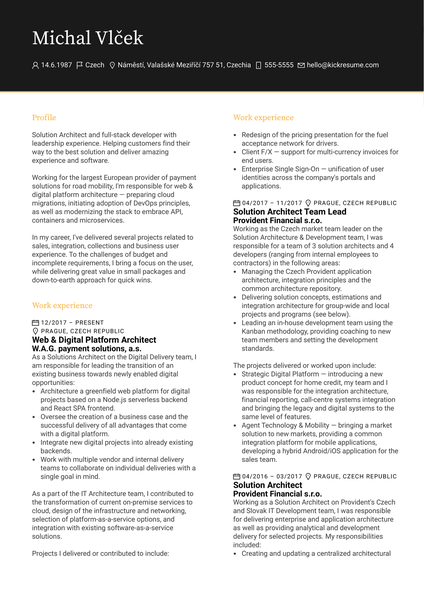

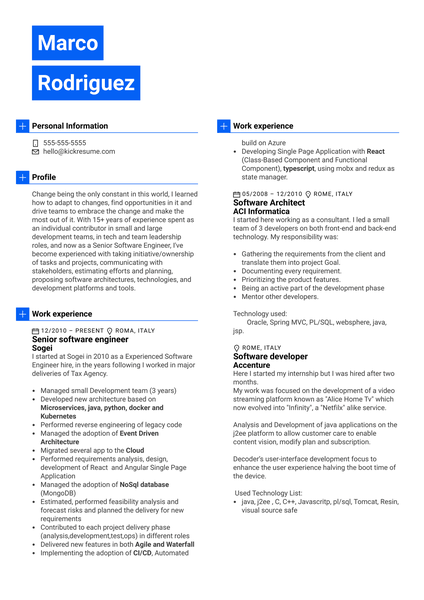

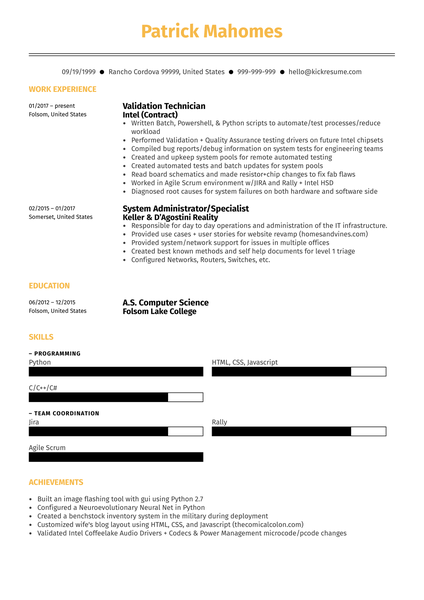
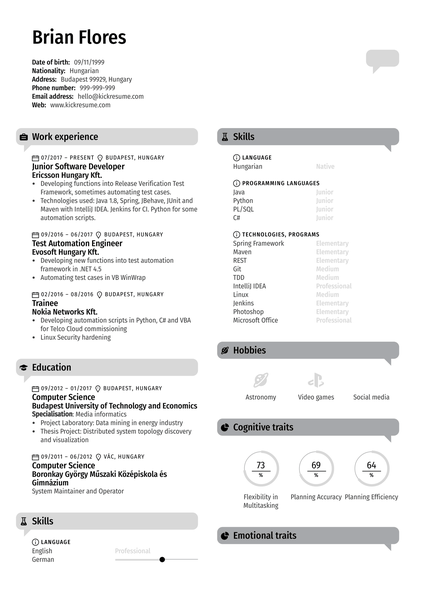

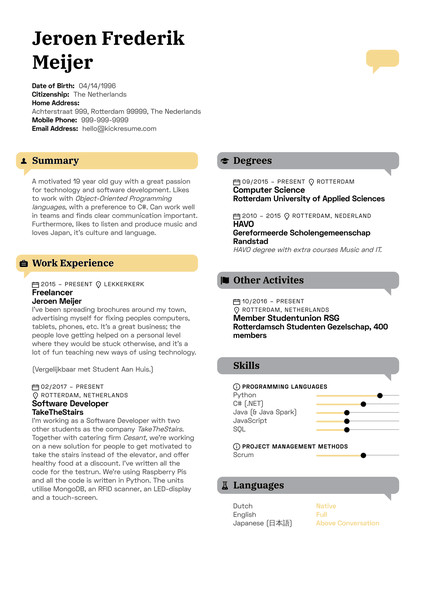

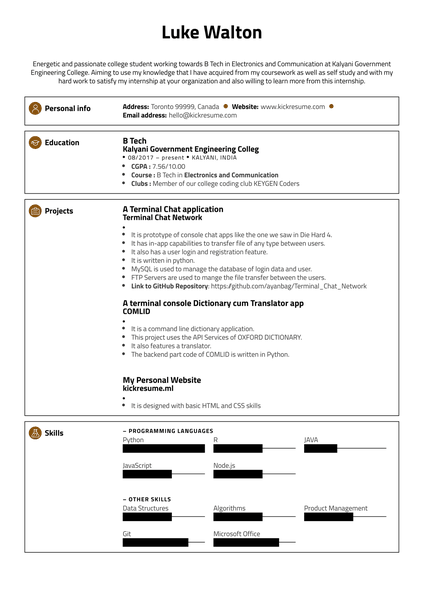

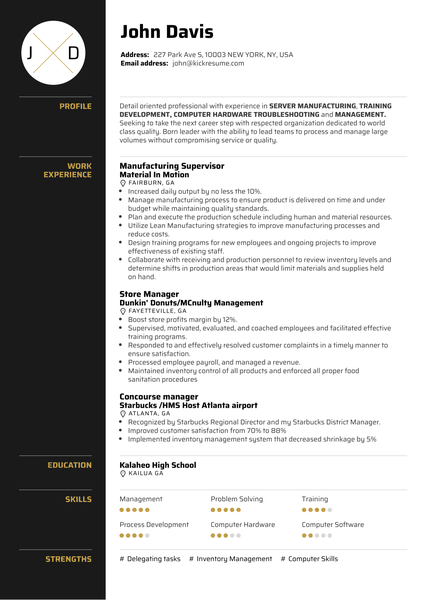
![Software Developer [swedish] Systemutvecklare](png/thumbnail-58.png)
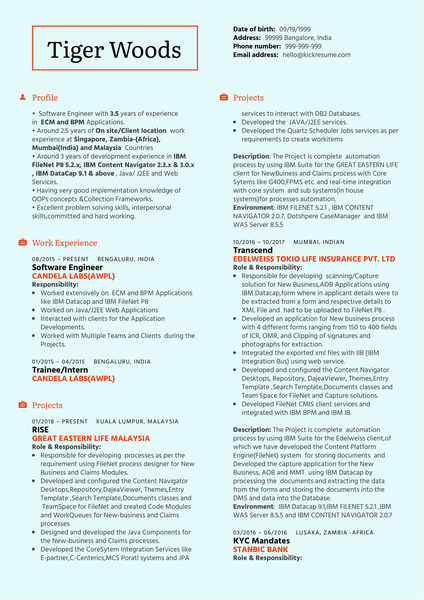

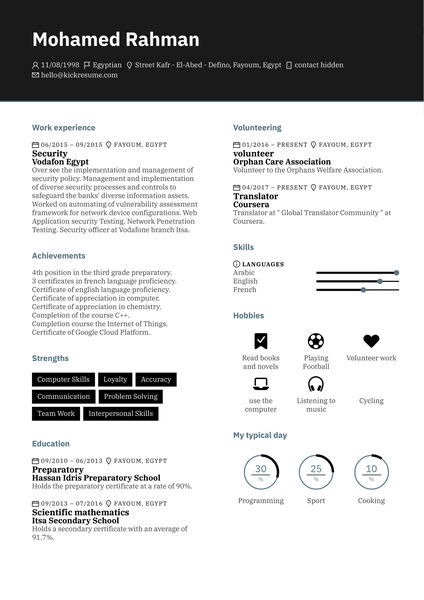
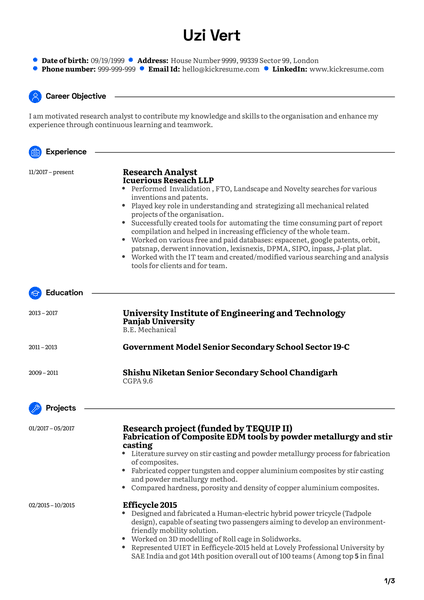
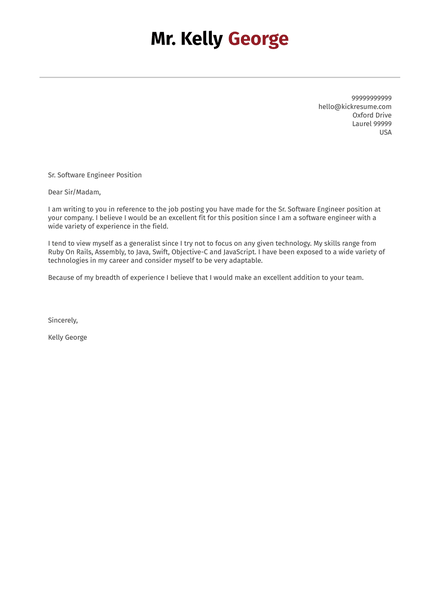
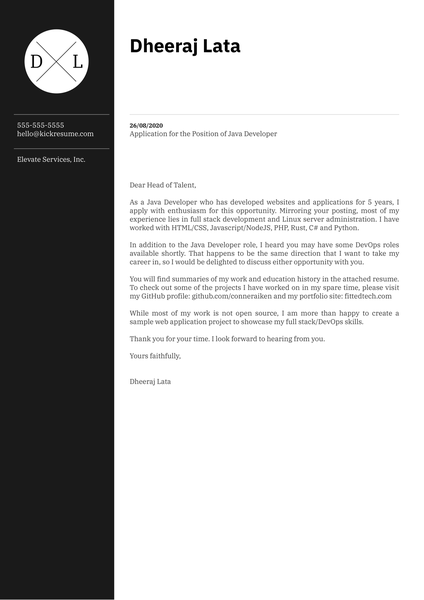
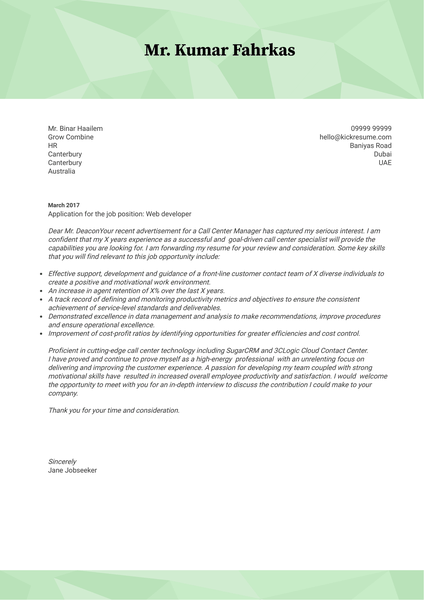

![Webmaster/webmestre Cover Letter Example [FR]](png/thumbnail-82.png)

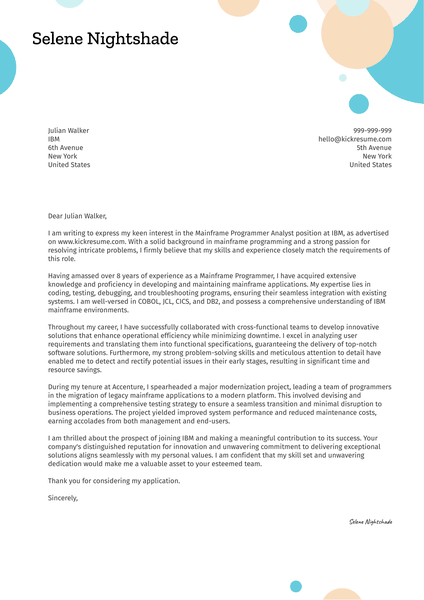
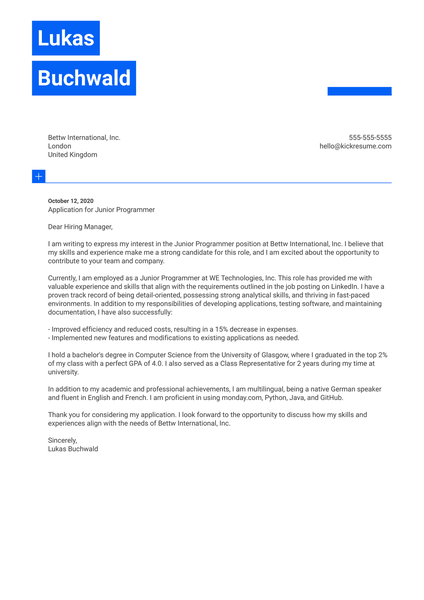
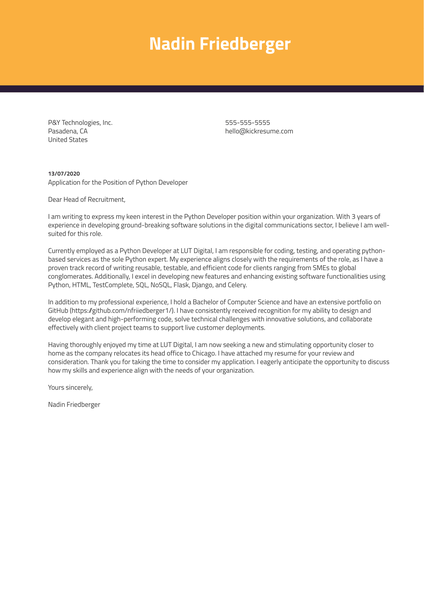
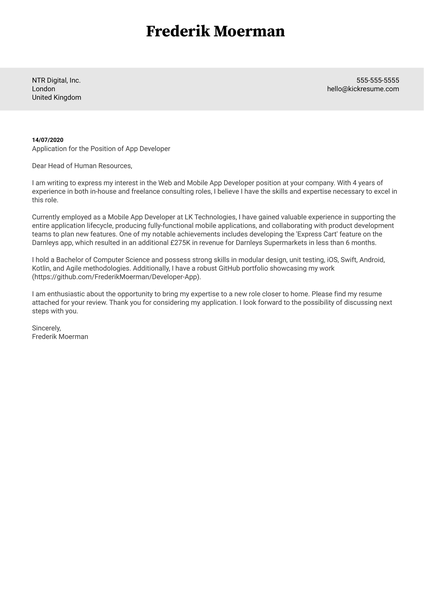
![How to Write a Professional Resume Summary? [+Examples]](https://d2xe0iugdha6pz.cloudfront.net/article-small-images/i-Profile.svg)
![How to Put Your Education on a Resume? [+Examples]](https://d2xe0iugdha6pz.cloudfront.net/article-small-images/i-Collage-Universities.svg)
![How to Describe Your Work Experience on a Resume? [+Examples]](https://d2xe0iugdha6pz.cloudfront.net/article-small-images/Experience.svg)


